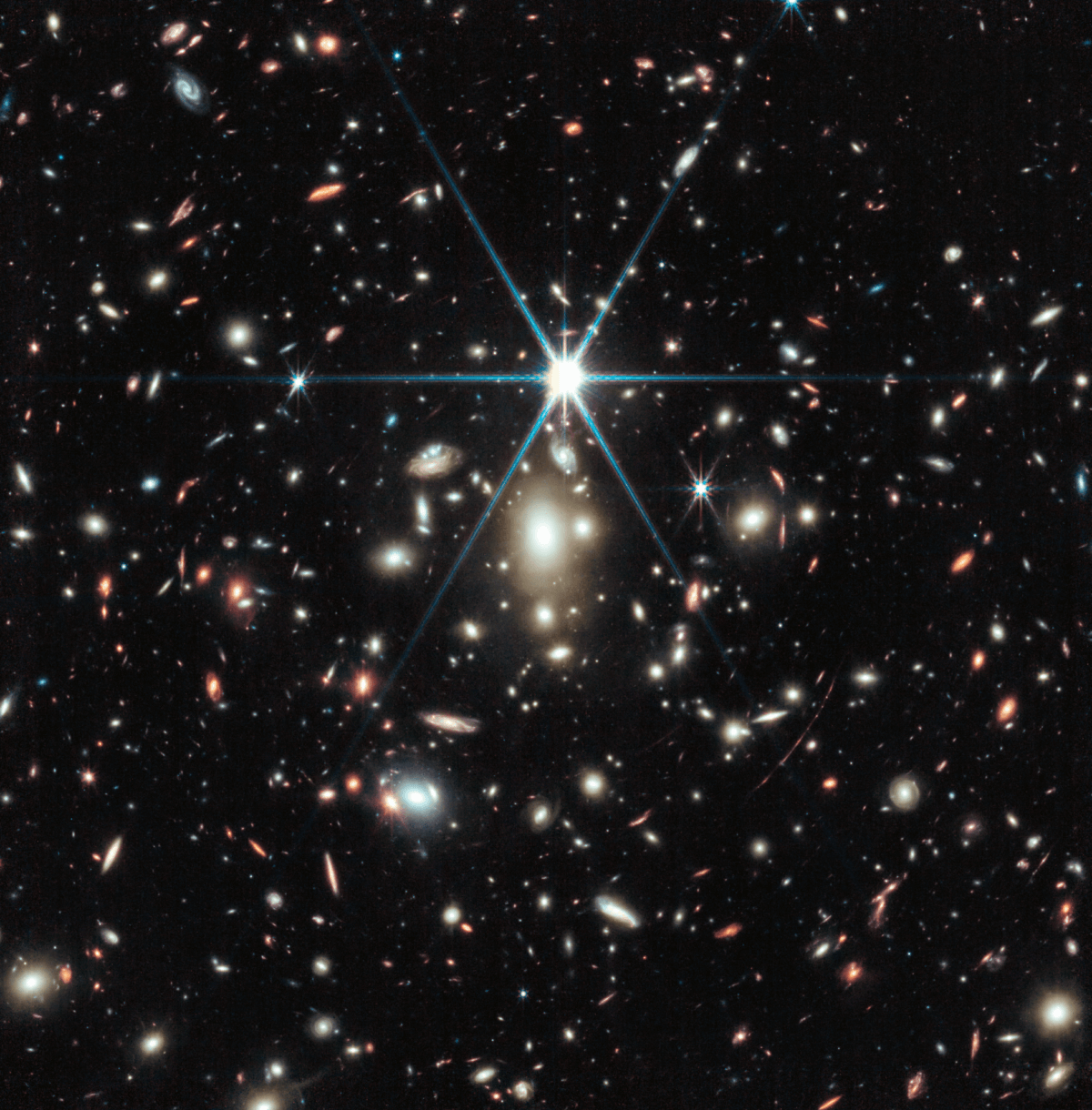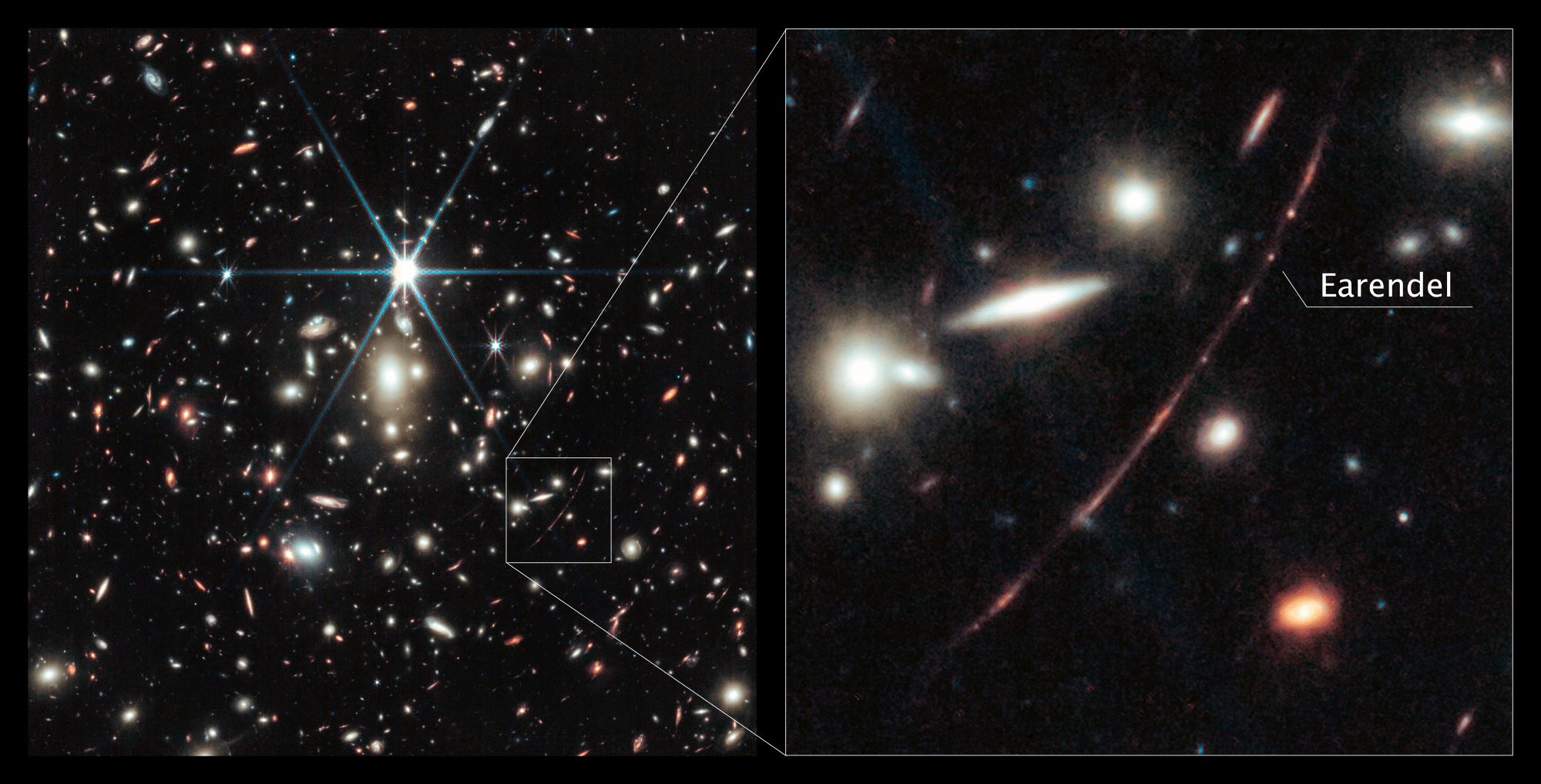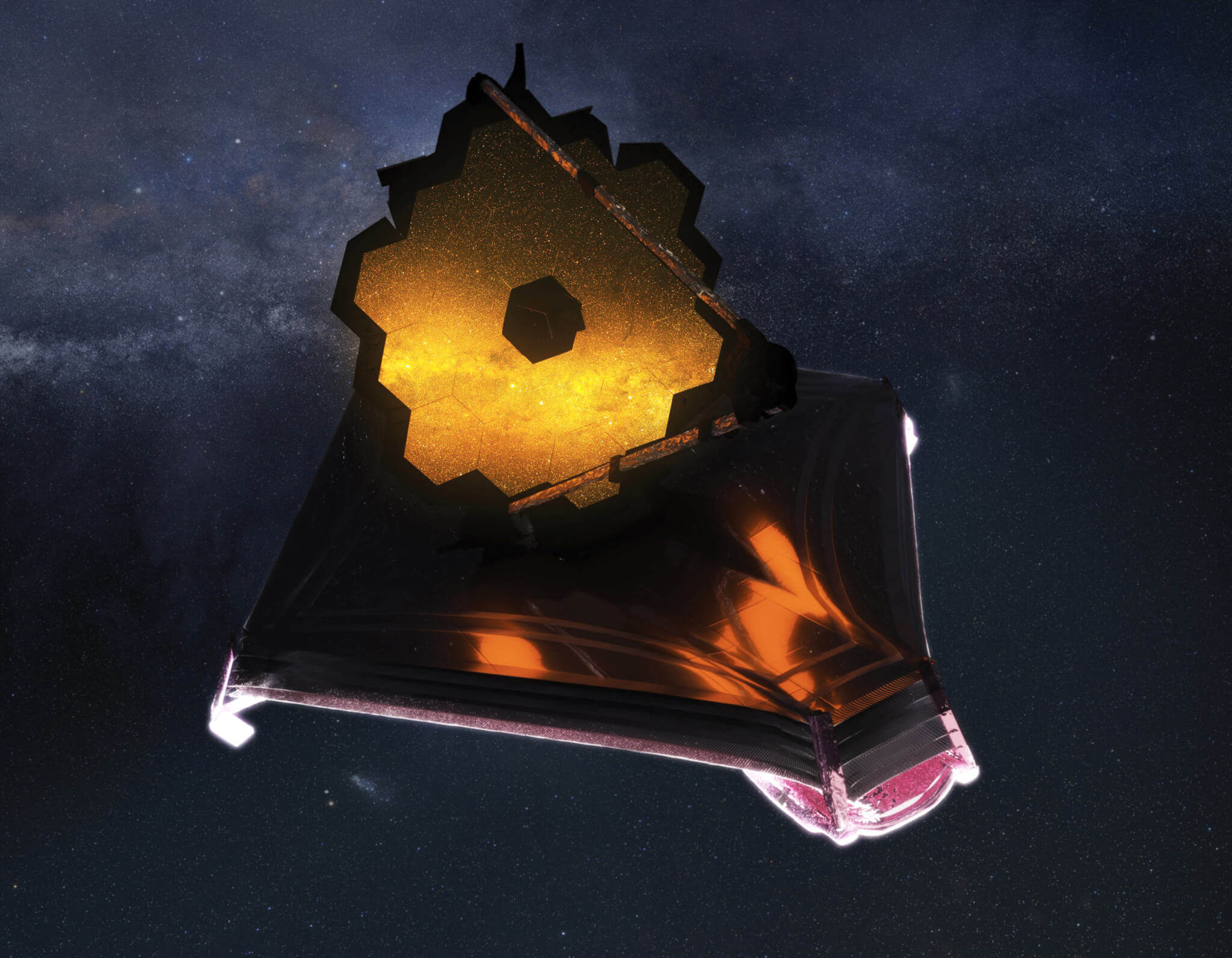
This image from NASA’s James Webb Space Telescope of a massive galaxy cluster called WHL0137-08 contains the most strongly magnified galaxy known in the universe’s first billion years: the Sunrise Arc, and within that galaxy, the most distant star ever detected. In this image, the Sunrise Arc appears as a red streak just below the diffraction spike at the 5 o’clock position. Credits: Image: NASA, ESA, CSA, D. Coe (STScI/AURA for ESA; Johns Hopkins University), B. Welch (NASA’s Goddard Space Flight Center; University of Maryland, College Park). Image processing: Z. Levay.
GREENBELT, Md. — Astronomers are giving us a look at the most distant star ever observed by humans, dating back to one billion years after the Big Bang. NASA's James Webb Space Telescope (JWST) followed up on observations by the Hubble Space Telescope, revealing the farthest star, which may have a “cooler, redder companion star.”
The celestial body, dubbed Earendel by the research team, is located in the Sunrise Arc galaxy. It is detectable only through the combined power of human technology and nature, using an effect called gravitational lensing. JWST's Near-Infrared Camera (NIRCam) instrument reveals that Earendel is a massive B-type star, more than twice as hot as our Sun and about a million times brighter.
Both the Hubble and Webb telescopes detected Earendel due to its fortunate alignment behind a distortion in space-time created by the massive galaxy cluster WHL0137-08.
“The galaxy cluster, located between us and Earendel, is so massive that it warps the fabric of space itself, which produces a magnifying effect, allowing astronomers to look through the cluster like a magnifying glass,” officials at NASA's Goddard Space Flight Center write in a media release.
“While other features in the galaxy appear multiple times due to the gravitational lensing, Earendel only appears as a single point of light even in Webb’s high-resolution infrared imaging.”

Based on these observations, astronomers estimate that the object is magnified by a factor of at least 4,000. It is thus extremely small and is the most distant star ever detected, observed one billion years after the Big Bang.
The previous record-holder for the most distant star was detected by Hubble, observed around four billion years after the Big Bang. Another research team using Webb recently identified a gravitationally lensed star nicknamed Quyllur, a red giant star observed three billion years after the Big Bang.
Stars as massive as Earendel often have companions. Astronomers did not expect JWST to reveal any companions to Earendel since they would be so close together and indistinguishable in the sky. However, based solely on Earendel's colors, astronomers believe they see hints of a cooler, redder companion star. This light has been stretched by the expansion of the universe to wavelengths longer than what Hubble's instruments can detect, making it only detectable with Webb.

JWST's NIRCam also reveals other remarkable details in the Sunrise Arc, the most highly magnified galaxy yet detected in the universe's first billion years. Features include both young star-forming regions and older established star clusters, some as small as 10 light-years across.
“On either side of the wrinkle of maximum magnification, which runs right through Earendel, these features are mirrored by the distortion of the gravitational lens,” NASA explains.
“The region forming stars appears elongated, and is estimated to be less than 5 million years old. Smaller dots on either side of Earendel are two images of one older, more established star cluster, estimated to be at least 10 million years old.”
Astronomers determined that this star cluster is gravitationally bound and likely to still exist even today, providing insights into how the globular clusters in our own Milky Way might have appeared when they formed 13 billion years ago.
Current analysis of data from Webb's Near-Infrared Spectrograph (NIRSpec) on the Sunrise Arc galaxy and Earendel will soon provide precise composition and distance measurements. Since Hubble's discovery of Earendel, Webb has detected other distant stars using this technique, though none quite as far away.
“The discoveries have opened a new realm of the universe to stellar physics, and new subject matter to scientists studying the early universe, where once galaxies were the smallest detectable cosmic objects,” the NASA team concludes.
The research team holds cautious hope that these findings could represent a step toward the eventual detection of one of the very first generations of stars, composed solely of the raw ingredients created in the Big Bang: hydrogen and helium.
The James Webb Space Telescope is part of an international program led by NASA in collaboration with its partners, the European Space Agency (ESA), and the Canadian Space Agency.
South West News Service writer Dean Murray contributed to this report.










